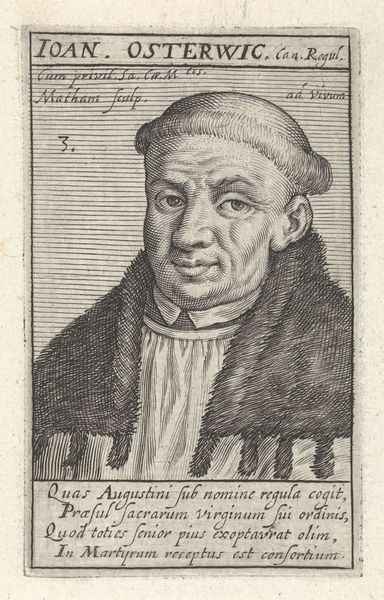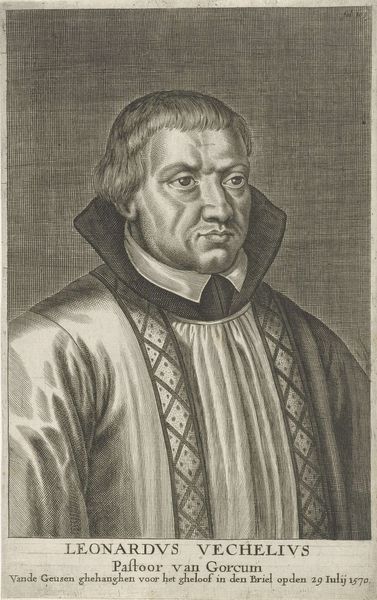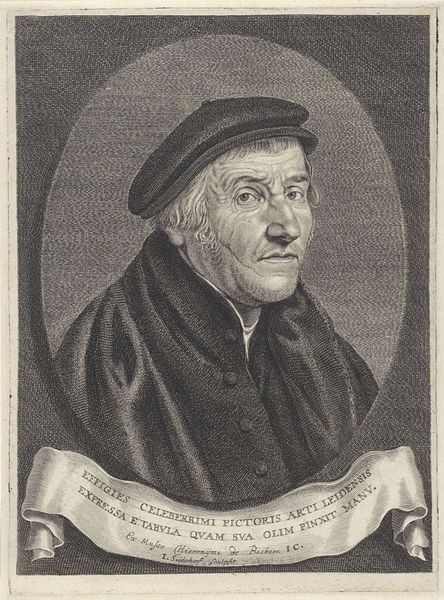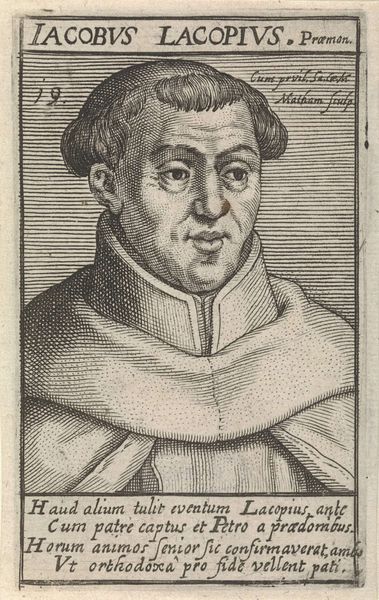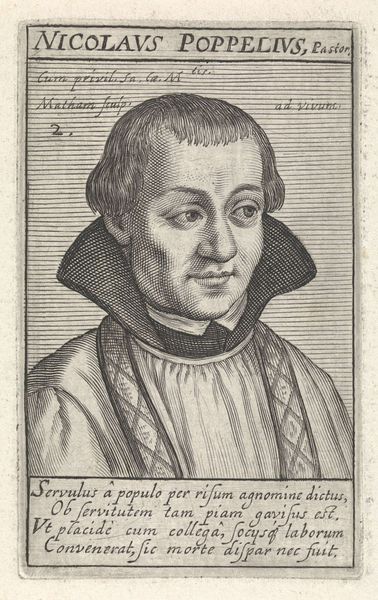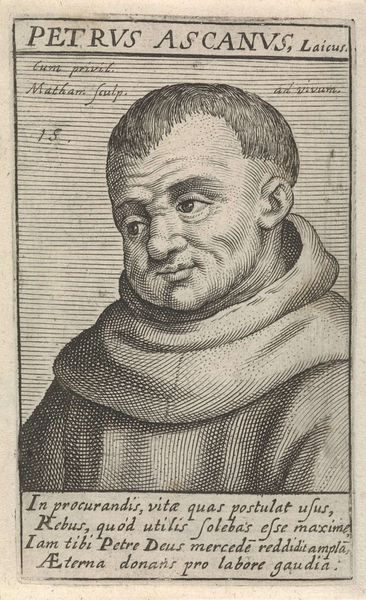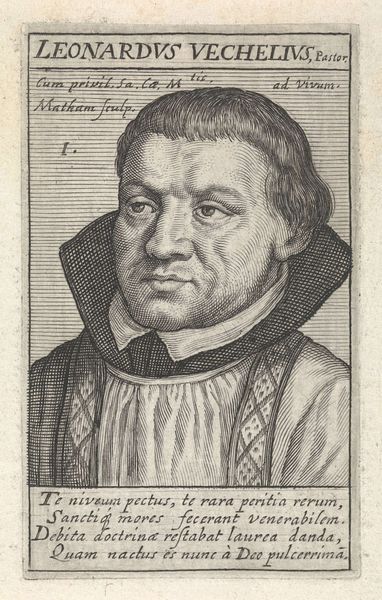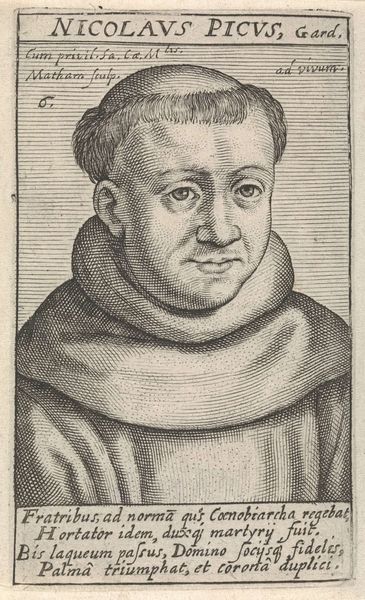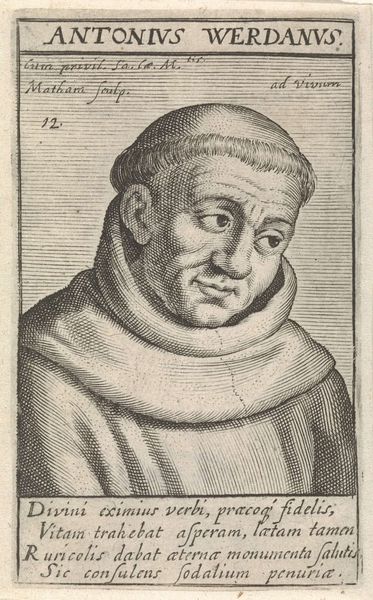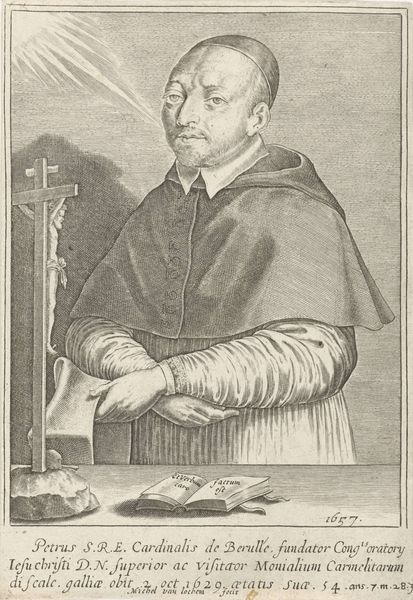
paper, engraving
#
portrait
#
baroque
#
portrait image
#
dutch-golden-age
#
paper
#
portrait reference
#
engraving
Dimensions: height 275 mm, width 175 mm
Copyright: Rijks Museum: Open Domain
Editor: Here we have Adriaen Lommelin's "Portrait of Jan van Osterwijk," an engraving on paper from the mid-17th century. There's a real gravity to this portrait, even in monochrome. What do you see in this work? Curator: I see a deliberate act of construction, Editor. Consider the means: engraving, a reproducible medium. This immediately distances it from the singular, "aura" of a unique painted portrait. Lommelin isn’t just capturing a likeness; he’s participating in the creation of an image circulated, consumed, and, crucially, representing a figure connected to martyrdom. Editor: So, it's less about individual artistry and more about... dissemination? Curator: Precisely! Look at the materials. Paper was increasingly accessible. The choice to use engraving suggests a desire for broader reach, perhaps aligned with solidifying Van Osterwijk's status within a particular religious or political discourse. The materiality itself speaks to a wider social purpose beyond pure aesthetics. Editor: It makes me wonder about the labor involved, the printmaker as a kind of manufacturer. Curator: Indeed. We must acknowledge the labour inherent in the engraving process. Lommelin, the engraver, becomes an artisan translating someone's features into a series of reproducible lines. This reframes our understanding; the art isn’t solely about the "who" of the portrait, but also the "how" and "why" of its creation and circulation. The context shapes the consumption and perception of Van Osterwijk’s image. It ceases to be just about capturing Van Osterwijk’s presence, but a tool of promotion, remembrance, or possibly propaganda. Editor: I never thought about portraiture like that. It gives you a lot to consider the production of the image and the context behind it. Curator: Exactly. Considering process and the broader material conditions gives us fresh perspective.
Comments
No comments
Be the first to comment and join the conversation on the ultimate creative platform.
